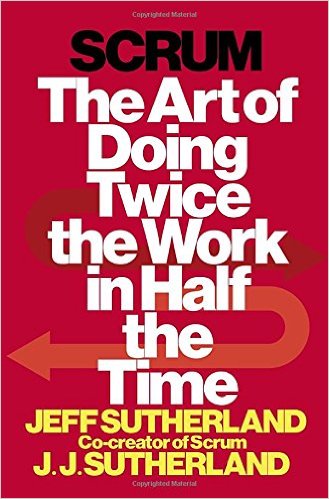 To promote extensive reading, we show how teachers can use Scrum (Sutherland & Sutherland, 2014), an established method for efficiently managing projects. Our preliminary results show that Scrum may markedly help students increase the amount they read, possibly contributing to a 60% increase in reading word counts.
To promote extensive reading, we show how teachers can use Scrum (Sutherland & Sutherland, 2014), an established method for efficiently managing projects. Our preliminary results show that Scrum may markedly help students increase the amount they read, possibly contributing to a 60% increase in reading word counts.
First, we outline a 10 step process for using Scrum to promote extensive reading. (1) Pick the General Scrum Reading Manager (the teacher). (2) Make teams of 3-4 members who will meet for a weekly Scrum. (3) Pick Reading Scrum Masters for each team. (4) Using post-its, each group makes a “Book Pile” of books that they want to read. (5) On their post-its, each member estimates how long a book will take to read. (6) Students set Reading Sprint Goals for the week. (7) Students make work visible, using the Scrum Board. (8) During Weekly Scrum, group members ask each other the three key Scrum reading questions. (9) Every 2 weeks, groups Report and Review their progress to the class. (10) At each Report and Review, groups reflect on how to improve.
During a period of four weeks, 27 students did a total of four reading Scrums. We then compared student reading word counts between the four week period before they did Scrum and the four week period while they did Scrum.
The results were encouraging. During the four week period before Scrum, each student read an average of 28,670 words. During Scrum, each student read an average of 46,919 words. This is nearly a 64% increase in reading amount.
At this point, we cannot claim that Scum will greatly increase student reading amounts. There are other variables that may have contributed to the increase for our students. However, this study does show the potential of Scrum for helping students read more, and we suggest that other teachers and researchers try Scrum in more rigorous experiments to see if it really works for promoting extensive reading.
This paper was presented at the 9th Annual Extensive Reading Seminar held at Nanzan University in Nagoya, Japan on October 1, 2016. The original title was “Applying Scrum Principles to ER Instruction,” by Joseph Poulshock and Douglas Forster. Click here for a PDF of the talk.
Reference
Sutherland, J., & Sutherland, J. J. (2014). Scrum: The Art of Doing Twice the Work in Half the Time. New York: Crown Business.


